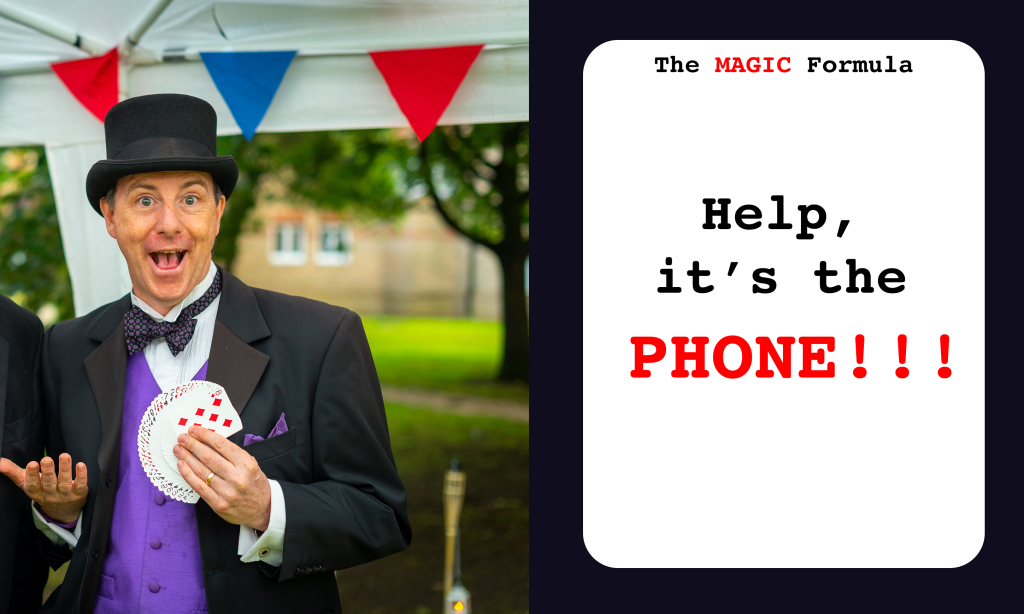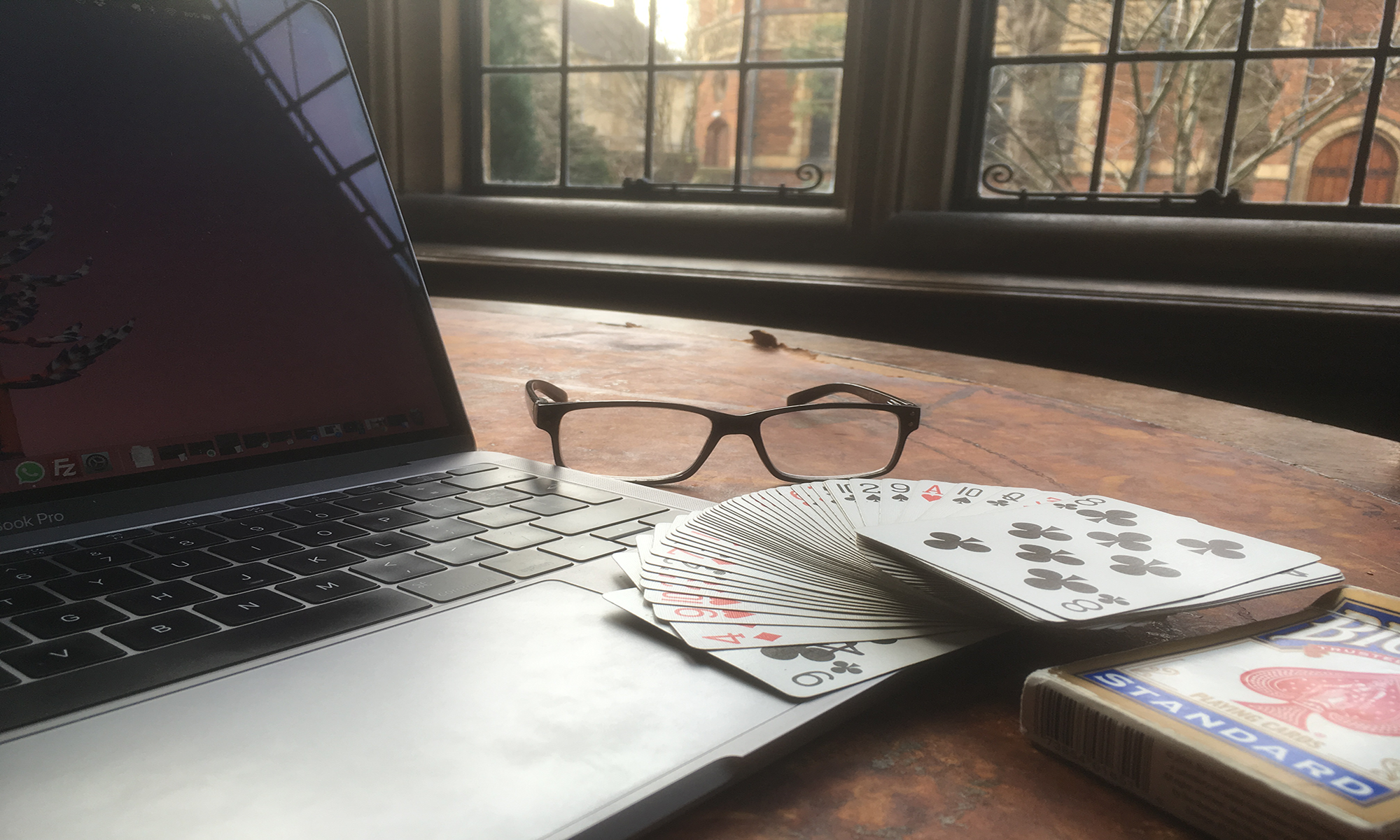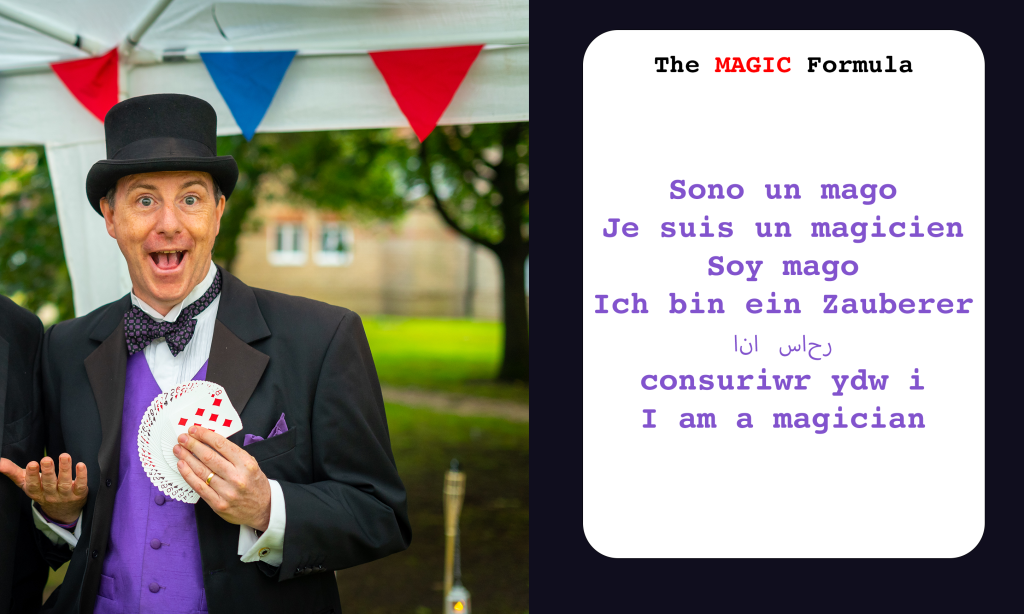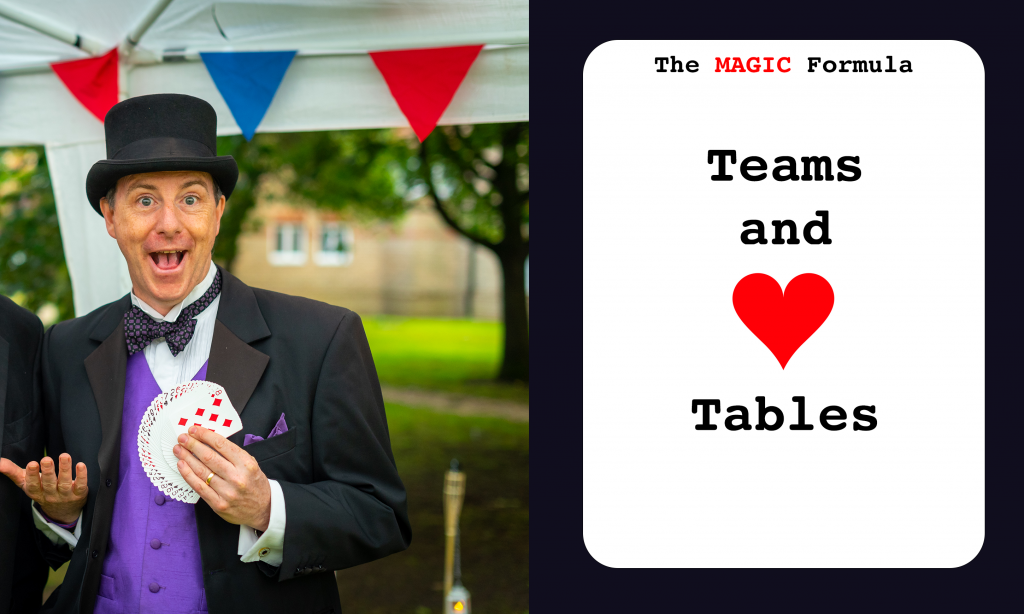
The MAGIC formula:
Moving
Attuning
Giving
Inspiring
Connecting
—
Tele-fear
Until recently, I had a marked reluctance to use the phone.
But that has changed.
What has happened to me and why?
There are two things. One is that the lockdowns forced me to use phone and video calling a lot, often with people that I had not met before. The other is an appointment approach to making and taking calls.
Efficiency Deficiency
I realised that my phone aversion stemmed from two things:
- One is the sheer inefficiency of playing voicemail tennis to make arrangements. Email can get details done so much faster.
- The other is that I really don’t like being caught unprepared by a phone call. What if they ask me a question that I can’t answer? What if I don’t have anything with me to make notes?
However, lockdown showed me that phone and video calls can be a great way to form and deepen relationships. What’s more, I realised that I actually enjoyed talking to people!
This led me to develop a compromise with my old phone-averse self.
Fix It Up
I now do calls by appointment. We fix a time when the other person and I will both be free. I even ask people I don’t know very well if we can fix up a time. Doing it by appointment means that neither of us is caught unawares, and we can prepare for the call. And it doesn’t suddenly interrupt whatever we are doing when the phone rings.
I hardly ever answer my phone, only when I recognise the number. Instead, I direct callers to my call booking system. I use Calendly, which I have found to be excellent. It offers callers a choice between automatically setting up a phone or video call. A few people find it an odd concept, but those who have tried it love it.
The MAGIC is in the POST
Knowing that I have a call appointment, I can prepare. I use a combination of POST and my MAGIC formula.
I was taught POST by the excellent business mentor William Buist. You can apply it to calls or in-person meetings:
Purpose – Why are we having this conversation?
Outcome – What do I want to be the result?
Structure – What form will the meeting or call take?
Timing – How long do we have?
Spend a few minutes thinking about your answers to those questions. Then you can actually use those points at the start of your call. Not in a robotic or formulaic way; it is better to make it natural, e.g.,
“Thank you for having this call to talk about our upcoming trip (Purpose). I have another meeting in 20 minutes (Timing), but I am sure we can work out the bare bones of the programme in that time (Outcome). I suggest that I outline my ideas, and then we can talk about them (Structure). How does that sound to you?”
I also use my MAGIC formula alongside POST when preparing for calls, especially if they could potentially be problematic. I make notes on the following:
Move – how can I engage the other person’s emotions?
Attune – how can I show that I understand their situation?
Give – how can I be generous to them?
Inspire – how can I give them a vision for something or encourage them?
Connect – what things do we have in common? Friends, organisations, holiday destinations, etc.
I don’t always manage to think of something for each point, but even if I can get two or three into the conversation, it helps. I often tick them off when I mention them in my call.
Time to Pick it Up Again?
So, if you are currently phone-averse, maybe it is time for a re-think? You don’t have to answer your phone all the time, but I discovered a middle way.
Let me know if this rings true.
—
Help Please!
I am writing a book about using The MAGIC Formula to manage yourself, particularly if you work from home.
If you are a freelancer, self-employed, or work from home in another capacity, I would love to talk to you.
If you would like to help, please get in touch:



